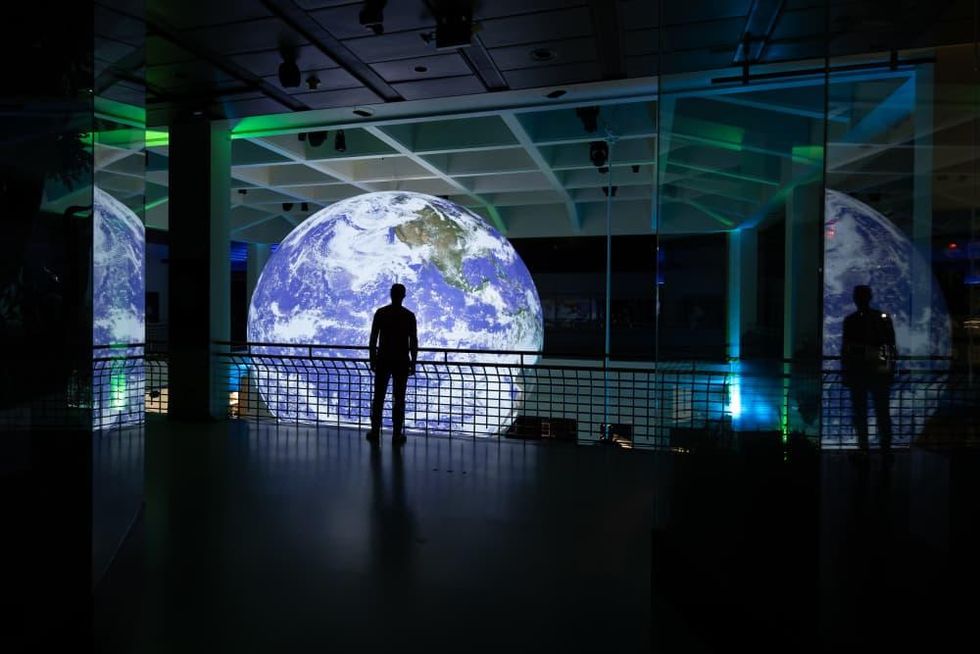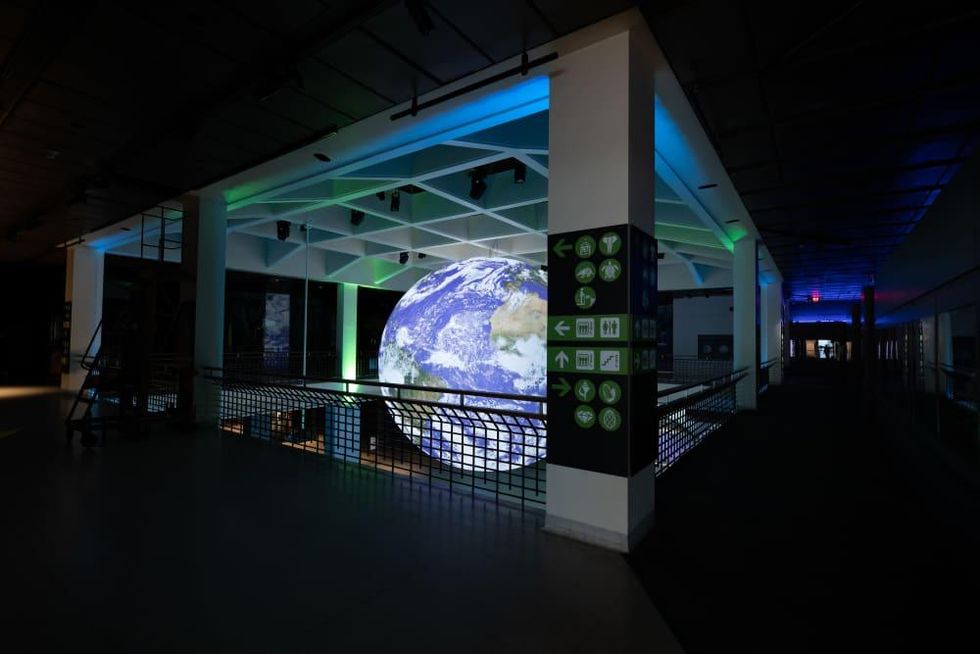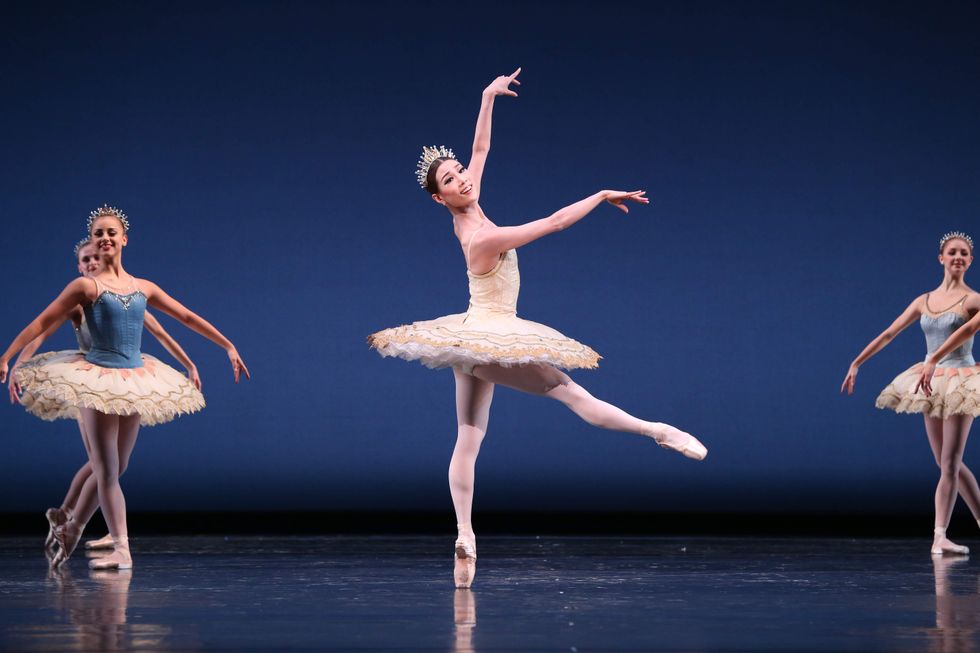Editor's note: Houstonians had lots of reasons to be excited about the arts this year, as evidenced by the 10 most-read stories of 2025. Ancient Chinese warriors came back to the Bayou City, bringing with them a history dating back more than 2,000 years. Life-sized elephant sculptures marched across the city, too, helping Houstonians learn about these remarkable creatures and the artists who made them. And an interactive new museum really lifted people's spirits.
Read on for the 10 hottest arts headlines in Houston this year:
1. China's Terracotta Warriors return to Houston Museum for fall exhibit. Visitors to the Houston Museum of Natural Science were able to get an up-close look at these life-size figures, which date to 206 BCE. They’re one of the greatest archaeological discoveries in Chinese history, unearthed in the 1970s. Presented with items from more recent digs, HMNS curator of anthropology Dr. Dirk Van Tuerenhout said the exhibit represented “a story of over two millennia with kingdoms waxing and waning.” The warriors were last in Houston in 2012 and 2009.
2. Unforgettable elephant art installation rumbles into Houston's Hermann Park. One-hundred life-size Indian elephant statues came to Hermann Park and surrounding areas like the Texas Medical Center from April 1-30. Created by the artists of The Real Elephant Collective, a community of 200 Indigenous artisans living within India’s Nilgiri Biosphere Reserve, each elephant is one-of-a-kind and based on a real-life pachyderm. “The Great Elephant Migration is more than an art installation — it is a call to action and a place to experience joy,” said Cara Lambright, president and CEO of Hermann Park Conservancy.
3. World-renowned interactive balloon art museum glides into Houston. The Balloon Museum opened November 15, emphasizing inflatable and air-based art. Think balloons, aerial installations, interactive lighting displays, and more. It showcases the work of 14 artists from around the world, and is one of several balloon museums worldwide, including in Paris. The museum is open through April 19, 2026.
4. Houston Ballet principal dancer announces retirement after 13 years. For more than a decade, Soo Youn Cho dazzled Houston audiences with her elegant artistry and technical brilliance in roles like Aurora in The Sleeping Beauty, the Sugar Plum Fairy in The Nutcracker, and myriad others. Her retirement came following spinal surgery to treat chronic back pain. The company’s first Korean principal, she called dancing with the Houston Ballet “one of the greatest blessings and privileges of my life.”
5. Houston Ballet names new executive director with deep ties to its past. Ballerina Sonja Kostich was on stage dancing in a commission that would pave the way for Stanton Welch to become the Houston Ballet’s artistic director. In May, Welch announced that Kostich would become the company’s executive director, with a tenure to begin in August. In addition to a dynamic career as a dancer, she also earned a Bachelor of Business Administration in Accounting from the Zicklin School of Business at CUNY Baruch College, graduating as salutatorian, and has a master's degree in arts administration.
6. Where to see art in Houston now: 10 exhibits and shows opening in September. Houstonians got a preview of all that was to come in the year’s ninth month. Among the shows to see were an exhibit of of bonded marble sculptures by Nigerian sculptor Ejiro Fenegal at Mitochondria Gallery; works by seven international artists at Rice’s Moody Center for the Arts that was inspired by nature and biological processes; and necklaces and brooches dating from 1976 to 2025 by internationally renowned German jewelry artist, Dorothea Prühl, that is still on display at The Museum of Fine Arts, Houston through January 3.
Photo courtesy of the Shaanxi Cultural Heritage Promotion Center
Terracotta Warriors and more than a hundred artifacts head to the HMNS this November.
7. All roads lead to Houston museum's blockbuster exhibit of Imperial Rome. “Art and Life in Imperial Rome: Trajan and His Times” showcases 160 objects of antiquity, including marble sculptures, frescoes, mosaics, delicate glass vessels, and exquisite bronze artifacts. On display at the MFAH, the exhibit transports visitors back in time to the Roman Empire. Pieces in the collection are on loan from several Italian museums. “This is truly a rare opportunity for U.S. audiences to experience spectacular objects from this glorious era of the Roman Empire,” said Gary Tinterow, director and Margaret Alkek Williams chair of the MFAH.
8. Hermann Park's always-free theater breaks ground on new Gateway Plaza. The Miller Outdoor Theatre Advisory Board broke ground on the new Gateway Plaza in November. Enhancements to the theater's welcome space include new walkways, new shade structures that replicate the theater’s distinctive, A-frame design, and an improved “Dining Boutique” with refreshed picnic tables and other improvements. Audiences will experience the changes for themselves next summer.
9. First-ever Houston Art Weeks promotes local galleries and supports mental health. Taking a cue from the popular Holiday Shopping Card, the StellaNova Foundation unveiled the inaugural Houston Art Weeks 2025 in October. The initiative was designed to support local Houston artists and provide contributions to assist Houston-area organizations that connect those in need to necessary mental health services. Shoppers could purchase works from local artists, galleries, and art events, bringing home unique items and knowing a portion of the sale would be donated to this year’s primary beneficiary, The Montrose Center.
10. Museum of Fine Arts, Houston celebrates Frida Kahlo with groundbreaking new exhibit. A pioneering exhibit organized by the MFAH, “Frida: The Making of an Icon,” traces Kahlo’s phenomenal rise onto the world art stage and her colossal influence on generations of later artists. More than 30 works in the exhibit are by Kahlo herself, which will hang amid more than 120 objects by artists from the 1970s into the 21st century who were influenced by her work. The exhibit opens in January 2026.








